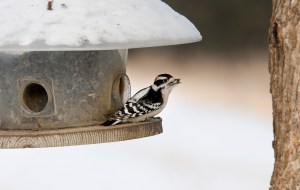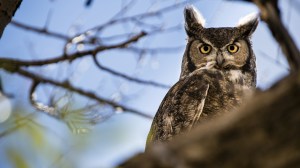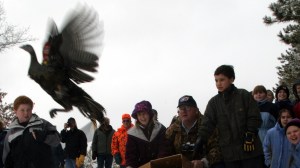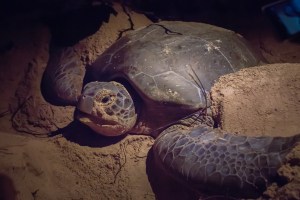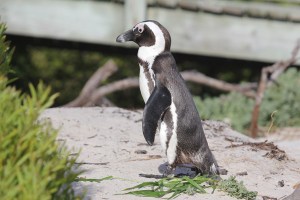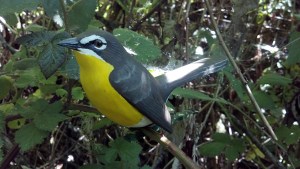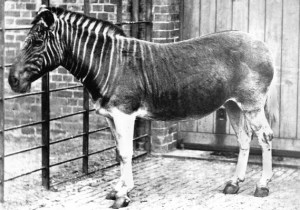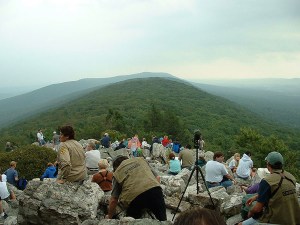Discover stories in Wildlife
Winter Bird Feeding: Good or Bad for Birds?
Winter bird feeding is hugely popular, with more than 40 percent of U.S. households participating. But is it actually good for the birds? Ornithologist Joe Smith looks at the science behind this backyard activity.
Urban Wild: Flying Squirrels of the Beltway
To see the southern flying squirrel, you don't make a trek into the wilderness or visit a national park. You need to visit a small nature preserve a short distance away from the bustling urbanity of the U.S. capitol.
The Hooting Season: Enjoying Great Horned Owls
Winter is the time to enjoy the great horned owl breeding season–a time when these charismatic birds are much easier to see and hear.
The Great Turkey Shuffle: How Restoration Has Changed Gobbler Genetics
When reintroducing wild turkeys across the United States, conservationists paid little attention to turkey subspecies. Today, determining turkey subspecies can require the skills of a wildlife CSI team. What does this mean for turkey genetics -- and future conservation?
Sea Turtles of St. Croix: Research Benefits Nesting Beaches
Nesting sea turtles have staged a dramatic comeback at a Nature Conservancy site on St. Croix. What's behind the success? Our blogger heads afield for a firsthand look at turtle research and monitoring.
The Penguins of Boulders Beach
Forty years ago, Boulder Beach in South Africa had no penguins. Today, tourists flock there to see thousands of these charismatic birds. A conservation success? Not quite. The real story is a bit more complicated.
Bison Return to Nachusa: A Behind-the-Scenes Look at Reintroduction
Join our behind-the-scenes look at the science, restoration and planning necessary for a successful bison reintroduction.
Decoy: How Fake Birds Aid Real Research
To get a bird in the hand, you have to catch it first. One of the bird researcher's most trusted bird catching tools is the decoy — a fake bird. Ornithologist Joe Smith on why real birds so often fall for their wooden and paper mache likenesses.
Quagga: Can an Extinct Animal be Bred Back into Existence?
In South Africa, there's an ambitious effort underway to restore the quagga. The one complicating factor? Quaggas have been extinct since the 1800s. Is this innovative conservation at its finest, or an expensive gimmick?
Safe(r) Spaces for Species under Climate Change
Climate change might change everything for conservation. How can we protect biodiversity as species move & adapt? New study says conserve "flexible" landscapes.
You Won’t Forget the Mega-Footed Malleefowl
Ever heard of a malleefowl? You’ll never forget it after reading about their big feet, huge nests, and chicks born fully feathered that can fly within 24 hours.
Enjoy the Fall Migration: Your Guide to Bird Observatories
The fall bird migration is underway. And there's no better way to enjoy the spectacle -- and help science -- than to visit a bird observatory near you. Ornithologist Joe Smith gets you started.
